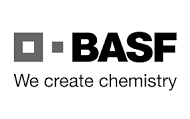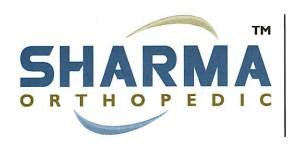REF: ADVANCE RULING APPEAL HS Classification Artificial Joints
Reference is made to your letters:xxxxxxxxxxxxxxxxxxxxxxxxxxxxxxxxxx
The letters address the HS Classification of hip and knee, joint replacement, components. The advance ruling placed the items at subheading 9021.39, which we disagree with. We have extracted the relevant Explanatory Notes and at the end of each extract, find our observations on the Notes in bold.
Subheading 9021.21, 9021.29, 9021.31 and 9021.39, Explanatory Notes
(III) ARTIFICIAL LIMBS, EYES, TEETH AND OTHER ARTIFICIAL PARTS OF THE BODY
These wholly or partially replace defective parts of the body and usually resemble them in appearance. They include :
(A) Artificial ocular fittings :
(1) Artificial eyes. These are usually made of plastics or glass to which small quantities of metallic oxides have been added in order to imitate the features and colouring of the various parts of the human eye (sclera, iris, pupil). They may be of single or of double shell types.
(2) Intra‑ocular lenses.
Artificial eyes for tailors’ dummies, for furs, etc., are excluded (generally classified in heading 39.26 or 70.18); artificial eyes identifiable as parts of dolls or of toy animals fall in heading 95.03 or in heading 70.18, if they are of glass.
(B) Artificial teeth and dental fittings, for example :
(1) Solid artificial teeth, usually made of porcelain or plastics (acrylic polymers in particular). These may be “diatoric” teeth having a small number of holes into which the fixing material penetrates (generally molars), or may be fitted with two metallic pins for fixing (generally incisors and canines) or with a groove for sliding on to a metal ridge fixed to the dental plate (also usually incisors and canines).
(2) Hollow artificial teeth, also made of porcelain or plastics and with the external shape of teeth (incisors, canines or molars).
According to the method of fixing, they are called “pivot teeth” (placed on a small metallic pin or pivot fitted into the prepared root), or “crowns” (fitted by means of artificial resin on to a previously shaped stump).
(3) Dentures, whole or part, comprising a plate of vulcanised rubber, plastics or metal to which the false teeth are fitted.
(4) Other articles such as, prefabricated metal crowns (gold, stainless steel, etc.) used for the protection of real teeth; cast tin bars (“heavy bars”) for weighting and increasing the stability of dentures; stainless steel bars for reinforcing vulcanised rubber dental plates; various other dentists’ accessories, clearly identifiable as such, for making metal crowns or dentures (sockets, rings, pivots, hooks, eyelets, etc.).
It should be noted that dental cements and other dental fillings fall in heading 30.06; the preparations known as “dental wax” or as “dental impression compounds”, put up in sets, in packings for retail sale or in plates, horseshoe shapes, sticks or similar forms, and other preparations for use in dentistry, with a basis of plaster (of calcined gypsum or calcium sulphate), fall in heading 34.07.
(C) Other artificial parts of the body, e.g., arms, forearms, hands, legs, feet, noses, artificial joints (e.g., for hips, knees), and tubes of synthetic fabric for replacing blood vessels and heart‑valves.
The heading excludes pieces of bone or skin for grafting, in sterile containers (heading 30.01) and bone reconstruction cements (heading 30.06).
Our Observations on the Extract of the Subheading Note Above
This part of the Explanatory Notes covers subheadings 9021.21, 9021.29, 9021.31, 9021.39, which cover ‘’artificial limbs, eyes, teeth, and other artificial parts of the body’’.
Subheading 9021.21, 9021.29, Subheading Explanatory Notes
(B) Artificial teeth and dental fittings, for example :
(1) Solid artificial teeth, usually made of porcelain or plastics (acrylic polymers in particular). These may be “diatoric” teeth having a small number of holes into which the fixing material penetrates (generally molars), or may be fitted with two metallic pins for fixing (generally incisors and canines) or with a groove for sliding on to a metal ridge fixed to the dental plate (also usually incisors and canines).
(2) Hollow artificial teeth, also made of porcelain or plastics and with the external shape of teeth (incisors, canines, or molars).
According to the method of fixing, they are called “pivot teeth” (placed on a small metallic pin or pivot fitted into the prepared root), or “crowns” (fitted by means of artificial resin on to a previously shaped stump).
(3) Dentures, whole or part, comprising a plate of vulcanised rubber, plastics or metal to which the false teeth are fitted.
(4) Other articles such as, prefabricated metal crowns (gold, stainless steel, etc.) used for the protection of real teeth; cast tin bars (“heavy bars”) for weighting and increasing the stability of dentures; stainless steel bars for reinforcing vulcanised rubber dental plates; various other dentists’ accessories, clearly identifiable as such, for making metal crowns or dentures (sockets, rings, pivots, hooks, eyelets, etc.).
It should be noted that dental cements and other dental fillings fall in heading 30.06; the preparations known as “dental wax” or as “dental impression compounds”, put up in sets, in packings for retail sale or in plates, horseshoe shapes, sticks or similar forms, and other preparations for use in dentistry, with a basis of plaster (of calcined gypsum or calcium sulphate), fall in heading 34.07.
Our Observations on the Extract of the Subheading Note Above
This part of the Explanatory Notes covers Subheadings 9021.21 and 9021.29 which covers ‘’Artificial teeth and dental fittings’’
Subheading 9021.31 and 9021.39 Subheading Explanatory Notes
(III) ARTIFICIAL LIMBS, EYES, TEETH AND OTHER ARTIFICIAL PARTS OF THE BODY
These wholly or partially replace defective parts of the body and usually resemble them in appearance. They include :
(A) Artificial ocular fittings :
(1) Artificial eyes. These are usually made of plastics or glass to which small quantities of metallic oxides have been added in order to imitate the features and colouring of the various parts of the human eye (sclera, iris, pupil). They may be of single or of double shell types.
(2) Intra‑ocular lenses.
Artificial eyes for tailors’ dummies, for furs, etc., are excluded (generally classified in heading 39.26 or 70.18); artificial eyes identifiable as parts of dolls or of toy animals fall in heading 95.03 or in heading 70.18, if they are of glass.
(C) Other artificial parts of the body, e.g., arms, forearms, hands, legs, feet, noses, artificial joints (e.g., for hips, knees), and tubes of synthetic fabric for replacing blood vessels and heart‑valves.
The heading excludes pieces of bone or skin for grafting, in sterile containers (heading 30.01) and bone reconstruction cements (heading 30.06).
Our Observations on the Extract of the Subheading Note Above
This part of the Explanatory Notes covers Subheadings 9021.31 and 9021.39. The Artificial Joints and corresponding parts/components have been allocated subheading 9021.31, therefore all the other items mentioned in this Explanatory Note that are not ‘’’Artificial Teeth and Dental fittings’’, and that are not ‘’Artificial Joints and their parts/components’’ are to be classified in subheading 9021.39. Therefore, the items listed on Table 1 cannot be classifiable in subheadings 9021.31 and 9021.39. The correct subheading will be 9021.31. Note that Rule 2(a) applies to articles of subheading 9021.31.
Parts of the Explanatory Notes Referring to subheading 9021.39
(III) ARTIFICIAL LIMBS, EYES, AND OTHER ARTIFICIAL PARTS OF THE BODY
These wholly or partially replace defective parts of the body and usually resemble them in appearance. They include :
(A) Artificial ocular fittings :
(1) Artificial eyes. These are usually made of plastics or glass to which small quantities of metallic oxides have been added in order to imitate the features and colouring of the various parts of the human eye (sclera, iris, pupil). They may be of single or of double shell types.
(2) Intra‑ocular lenses.
(C) Other artificial parts of the body, e.g., arms, forearms, hands, legs, feet, noses, and tubes of synthetic fabric for replacing blood vessels and heart‑valves.
Our Observations on the Extract of the Subheading Note Above
The extract above covers all other items that are classifiable under subheading 9021.39, after eliminating Artificial Teeth and Dental Fittings and Artificial Joints(Unassembled/Assembled)
Examples of Specific Items Classifiable under subheading 9021.39
- Assistive Robotic Arm
- Prosthetic Handset”
- Pulmonary Valved Conduit”
- Prosthetic and artificial heart valves.
- Vascular Intervention Stents.
- Gel liners for limb prostheses.
- Tissue expanders
- Various vertebrae spacers
- Stents and stent grafts
- Vascular microspheres
- Chin and breast implants
- Inner Ocular Lens Buttons
- stent, whether or not mounted,
- Haemostasis “Valve”
- Intraocular lens
- Coronary Stent
- Artificial corneas
Chapter 90 Explanatory Note 2
2.‑ Subject to Note 1 above, parts and accessories for machines, apparatus, instruments or articles of this Chapter are to be classified according to the following rules :
(b) Other parts and accessories, if suitable for use solely or principally with a particular kind of machine, instrument or apparatus, or with a number of machines, instruments or apparatus of the same heading (including a machine, instrument or apparatus of heading 90.10, 90.13 or 90.31) are to be classified with the machines, instruments or apparatus of that kind.
Chapter 90 Explanatory Notes{General Section}
GENERAL
(I) GENERAL CONTENT AND ARRANGEMENT OF THE CHAPTER
(II) INCOMPLETE OR UNFINISHED MACHINES, APPARATUS, ETC.
(See General Interpretative Rule 2 (a))
Provided they have the essential character of the complete or finished article, incomplete or unfinished machines, appliances, instruments or apparatus are classified with the corresponding complete or finished articles (for example, a photographic camera or a microscope presented without its optical elements or an electricity supply meter without its totalling device).
(III) PARTS AND ACCESSORIES
(Chapter Note 2)
Subject to Chapter Note 1, parts or accessories identifiable as suitable for use solely or principally with the machines, appliances, instruments, or apparatus of this Chapter are classified with those machines, appliances, etc.
Our Observations on the Extract of Explanatory Notes Above
In chapter 90 parts and accessories are to be classified in the same subheadings as the machines, appliances, or instruments unless the context otherwise requires. Incomplete or unfinished machines, appliances, instruments, or apparatus are classified with the corresponding complete or finished articles. Therefore, the Hip and Knee Joint components will be classified under subheading 9021.31
Summary of Observations
The Items under consideration are imported in components(parts). They are hip and knee joint replacement components. The doctors can then assemble them during the joint replacement procedures. We have indicated the type of joint, for each component that was listed on Table 1 . The imports are components of artificial joints, therefore as per Explanatory Note 2 to Chapter 90, the components are to be classified in the same subheading 9021.31 as Artificial Joints.
We therefore seek a review of your ruling in consideration of Chapter 90 Explanatory Notes and Heading 9021 Explanatory Notes. Please consider giving us a single decision for all the components, since they all fall under the same subheading and are all Artificial Joint components. Table 1 is attached at the end of this letter.
Thanking You,
Yours Faithfully
Janron Consult
—————————————————————————————————————————————–
Janron Consult, Tax Consultant Kenya, Customs Tax Consultant Kenya, Tax Advisory Kenya
Talk to Janron Consult for the following:
Ministry of Health Exemptions
Treasury Exemptions
Advance Ruling Application to KRA
Objection to KRA Rulings on Customs Value
Objections to KRA Rulings on HS Classification








